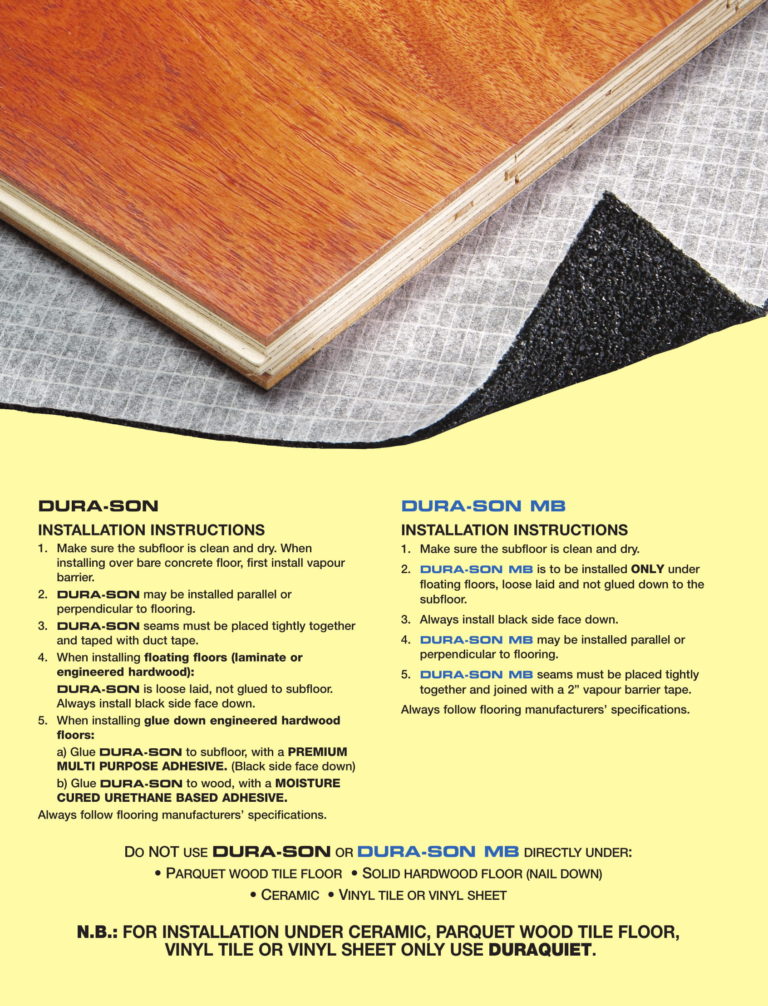

The ASTM E-2179 standard states the IIC rating as a Δ, or “contributed value” for the underlayment and flooring assemble. In addition, a new test protocol for concrete subfloors has been introduced under ASTM E2179-03e. The term IIC actually translates to Impact Isolation Class and it is measured and stated in accordance with ASTM Standard numbers C634 and E989 and tested via the test methodology of ASTM Test Method E492.

This type of sound would be the equivalent of foot steps, dropped articles, or furniture being dragged across the floor in the context of a multi-family building. The term IIC refers to the evaluation method used to quantify the transmission of Impact Sound through a floor/ceiling assembly system.

If you see STC ratings in the high 60’s or low 70’s in Sound Control Underlayment marketing materials and data sheets, or claims of “highest STC performance”, this would indicate that an elaborate sound rated ceiling (suspended) assembly being used in the test data and that the STC, as well as the IIC ratings, claimed in the test data or marketing materials should be viewed with a great deal of skepticism. A 6″ solid concrete slab, a very typical multi-family construction detail, has an STC rating of about 52, without any underlayment or flooring materials installed. In a typical multi-family assembly, the mass of the structure is what contributes the STC value of an assembly.
Sound control underlayment code#
Since the building code requires the information, the vendors of Sound Control Underlayments usually provide test data showing STC ratings.

In reality, Sound Control Underlayments contribute little or nothing to the STC rating of an assembly. The term STC actually translates to Sound Transmission Class and it is measured and stated in accordance with ASTM Standard number C634 and tested via the test methodology of ASTM Test Methods E90, E336, and E596. This type of noise would be the equivalent of voices, music, or television in the context of a multi-family building. The term STC refers to the evaluation method used to quantify the transmission of airborne sound through building elements, such as walls, windows, doors or floor systems. Consult your local Building Department or the Homeowners Association of the development for the exact standards applicable for your potential installation. Some areas and municipalities may have different building code standards, but the U.B.C. The higher the IIC or STC number, the better the sound attenuation performance, with 50 considered the minimum for most multi-family applications. International Building Code), which call for a minimum 50 IIC and 50 STC value. In multi-family construction, in most jurisdictions, there are minimum IIC and STC values that the floor/ceiling assembly, in a living space over living space configuration, must achieve in order to meet the code standard. To make an intelligent decision about what type of product to specify or install, it is important to understand what is required by the Building Code, in any given jurisdiction, and what the performance standards of STC and ICC ratings actually relate to. With all the different manufacturers and products and the plethora of marketing materials and data sheets making claims about the performance of those products, it is difficult to separate fact from marketing hype, when it comes to how a specific product will perform in a given application. This growth in the potential market for Sound Control Underlayments has brought many new manufacturers and technologies into the category. With the large number of multi-family and condo projects built over the last few years and the increased interest in “downtown living”, even in smaller urban markets and in suburban areas, and with those clients demanding more hard surface flooring materials, there has been increased attention focused on this issue. Sound Control for Hard Surface Flooring applications in multi-family construction can be a confusing and controversial topic. Thermal Insulating & Sound Control Underlayment


 0 kommentar(er)
0 kommentar(er)
